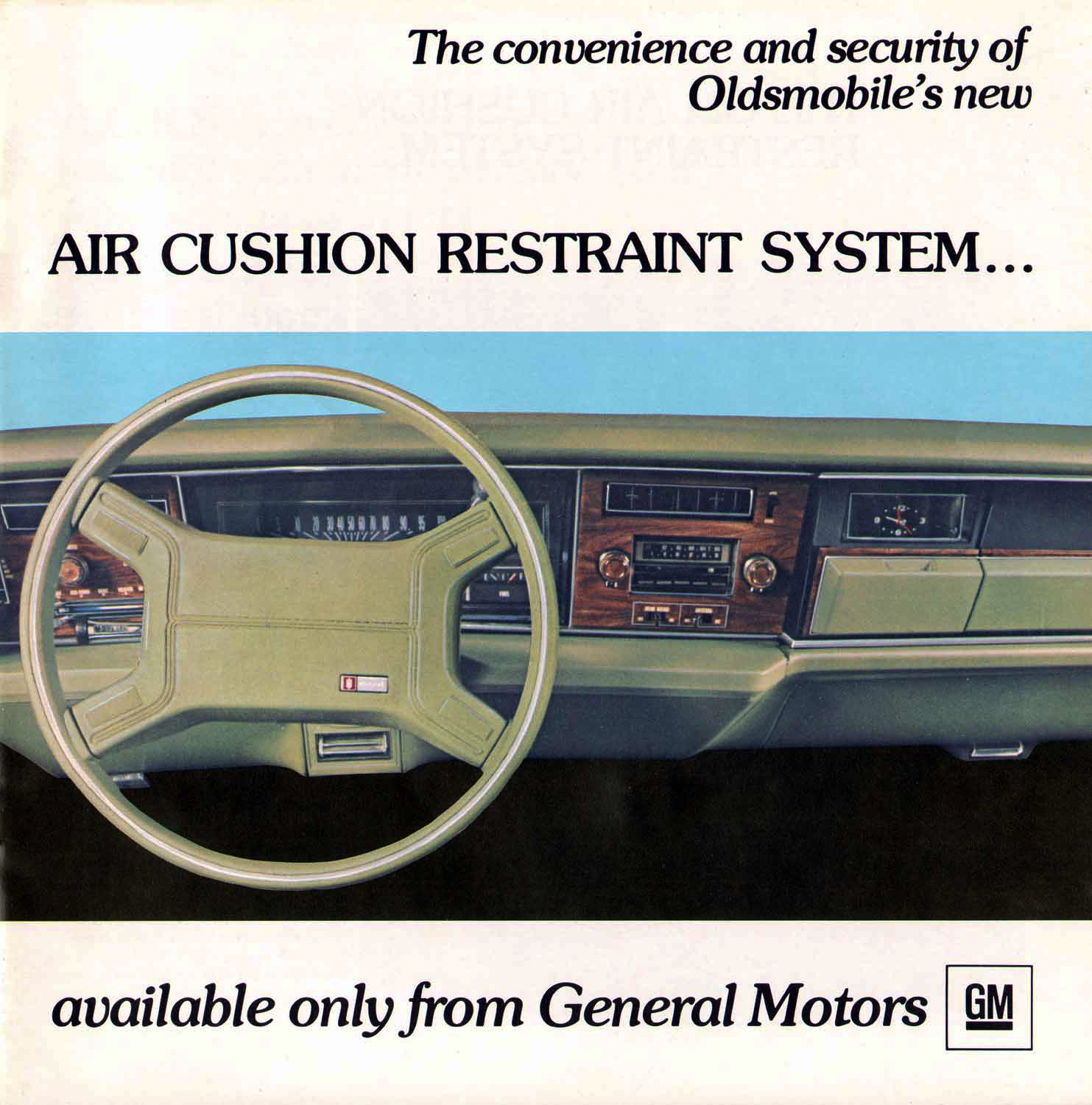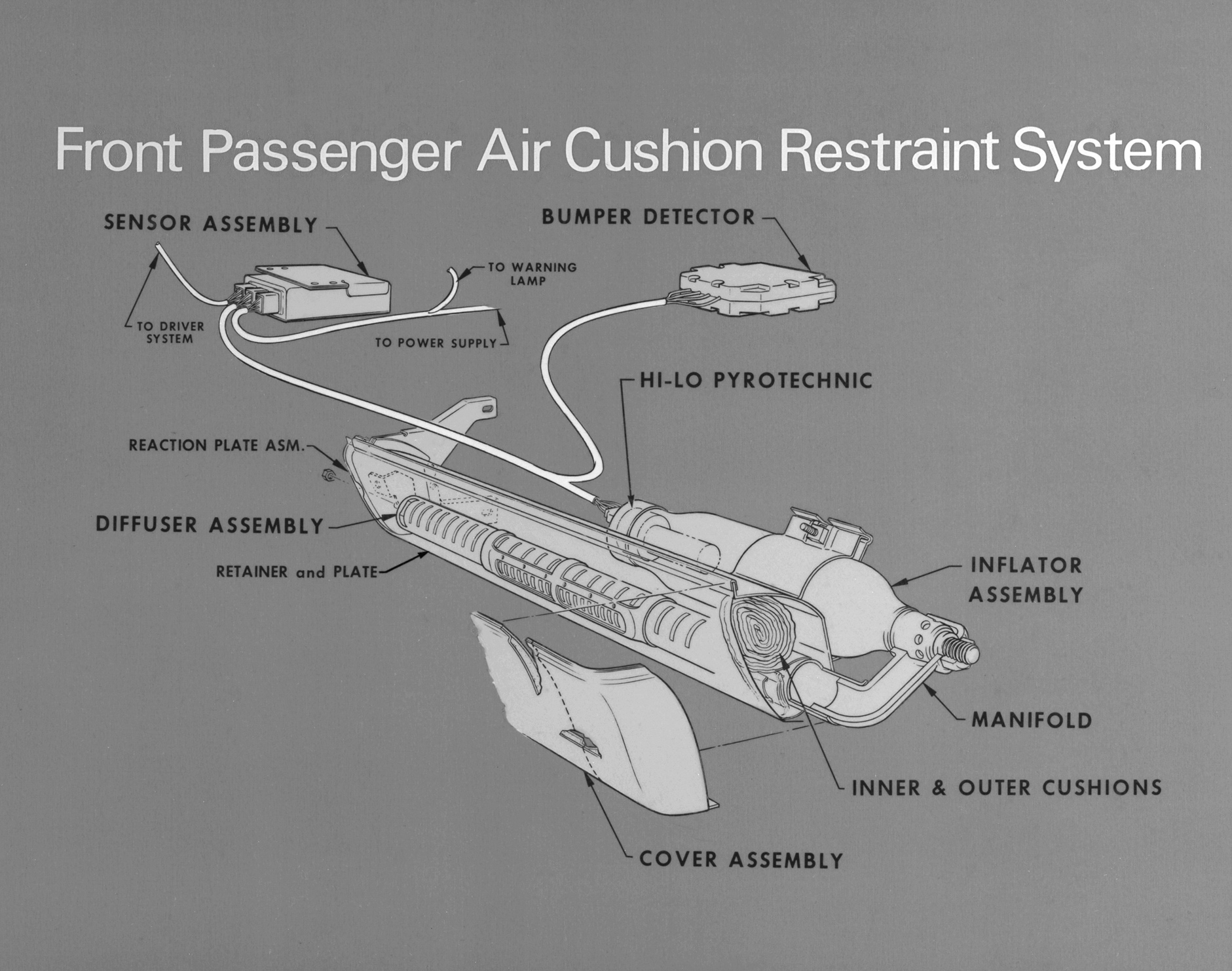Should you replace vintage airbags or drive on with confidence?

Along with reliable electronic fuel injection and melted marshmallow styling, the ‘90s brought driver and passenger airbags into the standard automotive features set. Baby boomers and Gen Xers might not like to think about it, but 1993 really was 25 years ago, and ‘90s cars are cruising into collectible and classic territory.
That got us thinking. After a quarter-century or more of tireless vigilance, do airbags need to be replaced like like toasted ECU capacitors or cracked headlamp assemblies? The answer hinges on a blend of time, manufacturer recommendations and the miracle of self-diagnostic electronics.
‘70s safety cushion
The early ‘70s found Ford and GM implementing airbags on their fleet and government vehicles. The first production automotive airbag soon followed as optional equipment in the the 1974 Oldsmobile Toronado Brougham. If front-wheel-drive Oldsmobiles were not your bag, then the Air Cushion Restraint System (ACRS) was optional on the Delta 88 Royale, Cadillacs and select Buicks moving into the mid-’70s. ACRS driver cushions were mounted under a decorative vinyl steering wheel pad and at knee level. The passenger side dual cushion setup was housed in the lower dash with a dual-pressure inflator system.

ACRS impact sensors deployed airbags in 60-thousandths of a second and yet GM recommended that seat belts were fastened at all times as airbags and seat belts together were found to be more effective than either by themselves. ACRS self-diagnostics ran at engine start and continually during operation. Any malfunction triggered the AIR CUSHION dash warning light. Annual dealer ACRS inspections and maintenance were recommended out to 60 months but these early production airbags proved far more durable.

A 2011 article in Automotive News cited early-’9-s Insurance Institute for Highway Safety legacy airbag testing with a pair of 100,000-plus mile 1973 airbag equipped fleet Chevrolet Impalas. One Impala was towed to the test site from a shed and the other was pulled from a boneyard. Both cars had mechanical and electrical issues and yet when crashed head on into a barrier at 25-30 mph their 20-plus year old airbags deployed flawlessly.
‘80s and ‘90s: Full frontal

The ACRS option was available until 1976 with ongoing research and development. GM shelved the program just as Mercedes-Benz kicked introduced an optional driver airbag in 1981. Chrysler and Ford offered airbags as the ‘80s unfolded and the 1987 Porsche 944 Turbo packed driver and passenger airbags as standard equipment.
Everything changed in the ‘90s. The federal Intermodal Surface Transportation Efficiency Act of 1991 required, among other things, that all passenger vehicles have driver and passenger side airbags as standard equipment by 1998.

Manufacturers got out ahead of the upcoming law with standard driver and passenger side airbags that stopped the widely disliked motorized passive restraint seat belts in their tracks. Airbag manufacturing refinements brought improved longevity and self-diagnostics to the passive restraint formula and by the mid-’90s airbag maintenance schedules started to drop from manufacturer owner’s manuals. Airbags were good for the life of the vehicle, even if that life motored on well past any 5-year/50,000 mile warranty.
Even so, the best place to find airbag service life is the manufacturer. We reached out to Mercedes-Benz, which provided Hagerty with definitive guidelines on airbag service life and replacement for all Mercedes-Benz vehicles with airbags installed as original equipment at the time of manufacture.
“Airbags that were installed in Mercedes-Benz passenger vehicles prior to January 1992 have a useful service life of 15 years, and must be replaced after the service life has been reached. The airbag replacement label located on the driver’s B-pillar, or on the glove box door, indicates when the airbag must be replaced. Airbags installed in Mercedes-Benz passenger vehicles manufactured as of January 1992 no longer have a service life limit, and therefore are not required to be replaced.”

Self-diagnostics
If the elation of settling in behind the wheel your flawless 1996 Suzuki X-90 on the way to Radwood gives way to anxiety while pondering if you should have replaced the airbags at the same time you replaced the age-checked Uniroyal Tiger Paws, rest assured that all indicators point towards worry-free motoring.
Consult the owner’s manual for airbag maintenance schedules and contact your manufacturer directly if there is any doubt. As an airbag system malfunction could have far more dire consequences than a jumpy tachometer needle or crusty capstan roller that shreds that C-90 cassette mixtape. Vintage and contemporary airbag systems alike are equipped with self-diagnostic fail safes. Heed any warnings, buckle up, and enjoy the ride.










I have more confidence in the older airbags than some of the newer ones, to be honest.
Due to remarkable bad luck, in the past couple of years I have experienced 2 vintage airbag deployments.
First in a 1992 Lincoln Towncar, which likely saved me from serious injury, and second in my 1996 Roadmaster Wagon doing some unplanned deer hunting.
Both functioned exactly as designed. At the respective time of events, the Lincoln was 29 years old, and the Buick 27.
Have confidence and be safe.